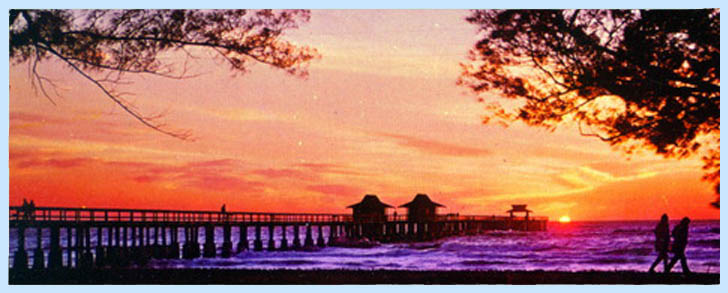Naples Florida History
GARDENING MATTERS
by Barbara Jones, Docent, Naples Historical Society
Luther Burbank said: Flowers always make people better, happier, and more helpful;
they are sunshine, food, and medicine to the soul.
The earliest evidence of ornamental gardens is displayed in Egyptian tomb paintings, c.1500 B.C. So when we consider "historical gardens", we're drawing on a long legacy. Persia had a tradition of gardens: Darius the Great was said to have a "Paradise Garden"-possibly a redundancy since in Arabic the word for Garden is also apparently the word for Paradise, a fact that will not surprise ardent gardeners. The "Hanging Gardens of Babylon" were one of the Seven Wonders of the Ancient World.
Each generation builds on and borrows from those preceding. Ptolomey the Greek influenced the gardens of Lucullus of Rome. After the Dark Ages, gardening again flourished in the 13th c., in the Italian villa gardens of the early Renaissance. English landscape gardens sprouted in great estates in the 18th c. The 19thc. engendered historical revivals and "romantic" cottage-inspired gardening. Flower gardens came into their own in the 20th c., perhaps as an antidote to the devastation of two world wars.
The Norris Gardens, which sits beside Naples' oldest existing home, Palm Cottage, is a pleasing confluence of a variety of garden styles including the "Gardenesque" style of English garden design evolved during the 1820s from Humphry Repton's "Picturesque" or "Mixed" style.
The Norris Gardens at Palm Cottage, maintained by dedicated volunteers, comprise 4 corners, or "rooms". The traditional Garden of the Senses is near the front porch, providing occupants with appealing scents, sights and even sounds (of bees).
The 2nd corner is the Palm Collector's Garden. Collecting was a hobby and a passion of many prosperous 19th c. adventurers and developers in Naples and elsewhere in the U.S. The 3d corner of the site is the Edible Garden, offering some of the herbs and fruits grown and consumed by early Naples settlers, including pineapples, bananas and papaya. And the 4th corner holds the Pioneer Garden-an example of hardy, drought-tolerant plants. Between corners, there are pergolas at the east and west side, supporting flowering vines.
A pond provides a cooling water feature that has been part of gardens since Moorish times. Tying it all together, with a nod to hardiness in a hot climate, is the large oval of Zoyzia grass. A stroll to the east side of Palm Cottage reveals the Shade Garden where epiphytes thrive.
We are all fortunate inheritors of the millennia-old human impulse to nourish and nurture and to create beauty. Visit The Norris Gardens at Palm Cottage for a docent-guided tour of this lovely garden area and you'll discover many more historic garden stories.
Located at 137 12th Avenue South, one block east of the Naples Pier
Guided Garden Tours: Every first and third Thursday, year-round
House Museum Tours: The Palm Cottage house museum is open for tours.
Telephone: 239-261-8164
www.NaplesHistoricalSociety.org
|

